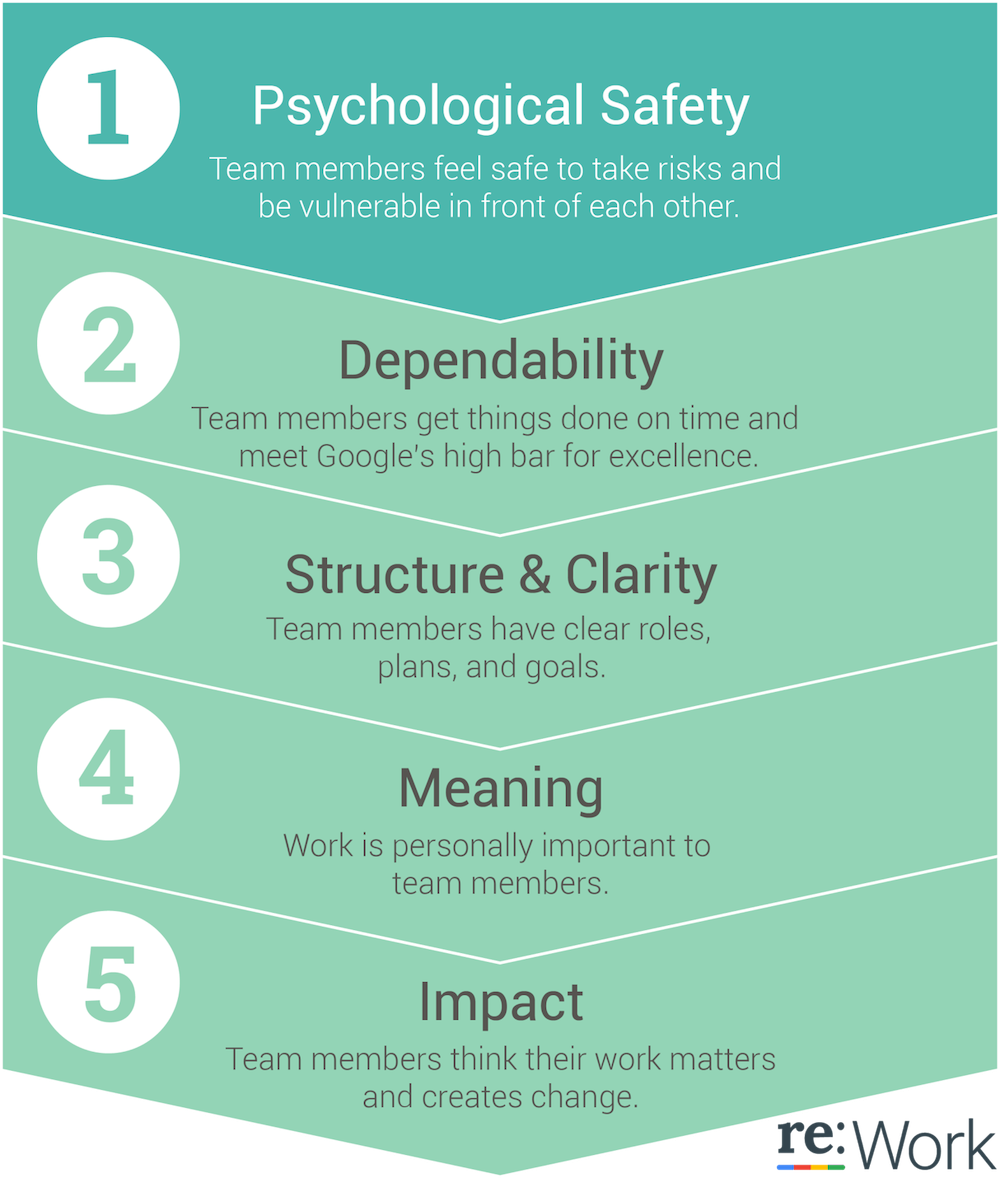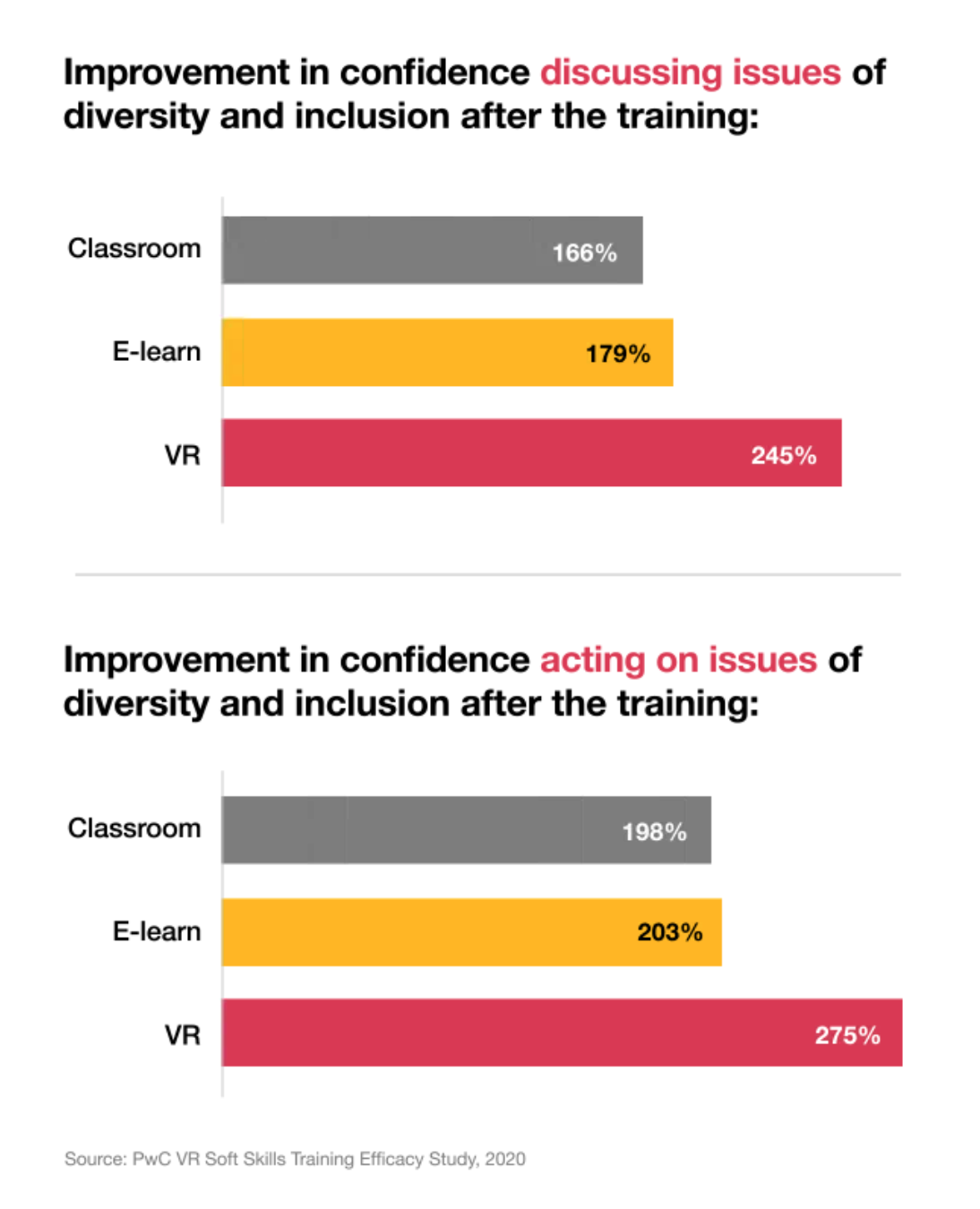Building our dream company, Alloverse has not been easy, yet because of our incredible team, it has been a delightful journey this far (no we aren’t done, yet — but we got things to show, and above all, a mission that we are passionate about). Working 9 to 5 everyday and on Alloverse at night, during summer holiday and weekends, I have been focusing on two departments: marketing & sales. And the same terms have been popping up over and again, to the point where I recently ended up dreaming about presenting crappy powerpoint slides in front of scary faceless aliens. Anyway, after waking up this morning, I remembered my math teacher in 2nd grade saying ‘if you can explain it to your little sister, and she gets it, then you definitely got it Julie’. So here we are, after spending hours reading on retention, I realised that to get there in today’s environment, we need to go way back (well about 8 years ago):
In 2012, Google decided to dig into the metrics that make up the Perfect Team and launched the Project Aristotle, which lasted around two years. Over that time, they found out that “group norms” (traditions, behavioural standards and unwritten rules that govern how people behave together) were not the main reason for a group to function. In effect for a team to work out and excel, it needed Psychological Safety (people’s perceptions of the consequences of taking interpersonal risks in a particular context such as a workplace). Yes! (And this to me sounded awfully familiar to a love relationship key metrics)

Furthermore, for one to convey the above metrics, communication played a major part, just like, once again, in a love relationship. So the lack of it — can either deepen trust or wreck it and it is no secret that to know someone well, comes mainly with being able to communicate ideas, dreams, emotions, etc — may it be verbal or physical. As this Project Aristotle showed, teams are complex clusters and even if each member is carefully selected, without Psychological Safety, talent only will not drive it.
Psychological Safety in a remote environment
Six years later and we now live in another dimension due to a global pandemic. Lucky ones are able to work from home and thus, several major product companies have decided to remain remote until new notice (July 2021 for some!). Not only do some struggle to work with others without seeing them, others start a job remotely without ever meeting their team mates! The struggle to make sure that everyone is well, happy, positively challenged and efficient is real and the Project Aristotle could definitely be done again, but this time, researching what makes a Perfect Distributed Team.
Psychological safety is surely very relevant right now, however without seeing each other; feeling each other’s emotion or reactions in 3D — how can one feel safe & ultimately, trust the other. It is no secret that trust takes time to cultivate and can be destroyed exceptionally quickly. One knows so especially when it comes to love and friendly relationships.

So going back to what makes a love relationship work, a certain Martin Forster wrote a brilliant book introducing a concept, which can be transposed to the business world: every negative, trust-threatening interaction needs five positive, trust-building interactions to counteract it.
Wouldn’t 3D interactions help us enact on Martin Forster’s advice then and reinforce trust among employees, or avatars if meeting in Virtual Environments?
Besides communication as an easy option, people can sense when something isn’t being said, and as the Google study of teams found, open communication can have a notable impact on the levels of trust within a team. Aside from communication, one tends to forget that success is often built on experiences, the humane touch of our day to day working hours with its emotional interactions; complex conversations and who we wish to be, become and feel cannot be optimised.
So, although we still meet and interact daily in 2D, how do we make sure that trust among team members grows stronger? ’Cause without it, not only will teams deplete, but people will leave and without them, no company can subsist. And that goes for customers too. Hence retention is what we try to cultivate when nurturing psychological safety, communication and trust.
So what is our solution to retention !?
The last paragraph did end up being quite sad, but be reassured, there is a viable solution thanks to the wonderful advancement of technology: Virtual Reality!
Nine months into this global pandemic, most of us, the lucky ones, are sick of Zoom, Microsoft Teams, you name it — we are feeling the fatigue of it. Additionally, we also realise that workshopping with a 2D screen doesn’t bring us as much as when experiencing it IRL. Same goes for sensing the tiny emotions, feelings of our comrades during our calls, because eventually you will lose focus on the conversation trying to read in-between the “behaviour lines”; and that is, if your colleague is even showing her/his/their face(s).
As PwC’s most recent study showed, Virtual Reality may be the answer to our 2D meetings exhaustion, not only is it fun to use and work with, but is also has tremendous consequences on one’s focus and engagement, which are key to great communication, trust, hence Psychological Safety.

Thanks to many innovative minds, Virtual Reality is growing and is more present than ever, and with it comes some other wonderful perks:
- Spatial independence
No need to travel to meet anymore, which is saving companies from a lot of logistic thinking and money. Furthermore, it also enables everyone to participate to great gatherings; may they have aerophobia, be physically disabled or don’t have enough time due to personal obligations. - Immersion
Impossible to be distracted when using VR, or to shut down your webcam to take a phone call. Instead it keeps you focused and in the present, hence more engaged and easier to remember the content of your meeting in the long term. - Increased creativity
When we collaborate, we are mostly in a room with windows ,if lucky, a white board and lots of coffee. VR allows you to pick any type of environment, how creative would your workshop be if you could hold it in the nature, surrounded by blue sky and luscious flora?
And it would be easy to add to that list, depending on the industry you work in or the needs you have as a human being, but also as a company — creativity, in our current situation is of course a wonderful tool to get by. Besides, who doesn’t love a bit of magic?
Well, by now, you are probably thinking that VR may be an interesting option and if you do, then you should have a look at Glue.work or Spatial.io—both offer some great options for collaborative get-togethers. With Alloverse, we are working on empowering anyone to create multi-user virtual workspaces and the 3D applications (“appliances”) to furnish them. A little more work maybe, but I did hear somewhere that building something meaningful did reinforce trust among individuals 🤩
Join us in the Alloverse Discord and share your vision of the future of VR!
Julie